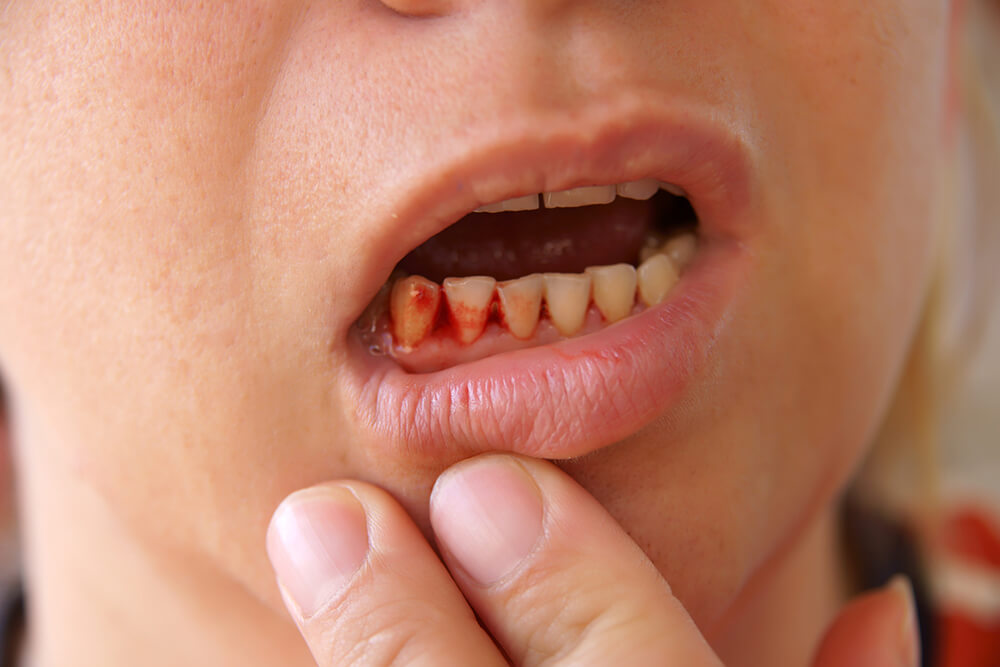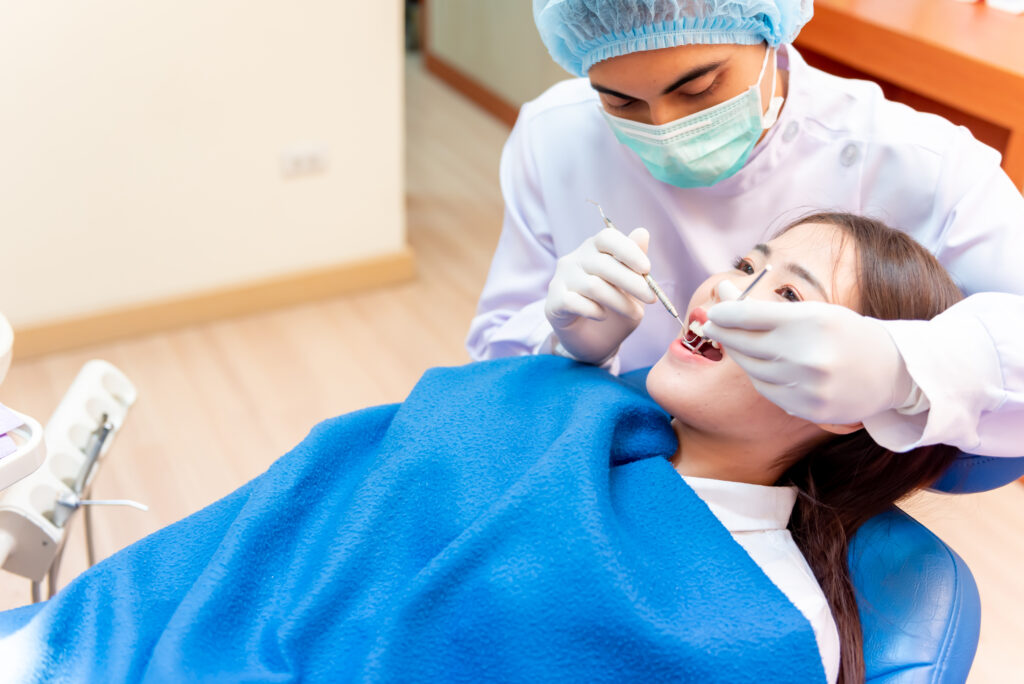Understanding and Addressing Bleeding Gums
Bleeding gums can be a startling sight, especially when it happens during your regular brushing routine. While occasional minor bleeding might not be a cause for immediate alarm, persistent bleeding can signal underlying issues that require attention. This article delves into the various reasons why your gums bleed when you brush, explores treatment options, and provides tips for preventing future occurrences.
The Most Common Culprit: Plaque Buildup and Gingivitis
The leading cause of bleeding gums is plaque buildup. Plaque is a sticky film of bacteria that constantly forms on your teeth, particularly near the gum line. If not removed through regular brushing and flossing, plaque hardens into calculus, also known as tartar. This hardened plaque irritates the gums, causing inflammation, redness, and sensitivity. This early stage of gum disease is called gingivitis.
The hallmark symptom of gingivitis is bleeding gums, often triggered by brushing or flossing. Other signs of gingivitis may include:
- Swollen and puffy gums
- Gums that are red or purple in color
- Tenderness in the gums
- Bad breath (halitosis)
The good news is that gingivitis is reversible. With proper oral hygiene practices, you can eliminate plaque buildup and prevent further gum irritation. This includes:
- Brushing your teeth twice a day for two minutes each time, using a soft-bristled toothbrush and a fluoride toothpaste.
- Flossing once a day to remove plaque and food particles from between your teeth.
- Scheduling regular dental checkups and cleanings to remove tartar buildup that you can’t tackle on your own.
Brushing Technique and Tools: Are You Being Too Rough?
While thorough brushing is essential for good oral hygiene, aggressive brushing techniques can also contribute to bleeding gums. Brushing too hard can damage the delicate gum tissue, leading to irritation and bleeding. Here are some tips for gentler brushing:
- Use a soft-bristled toothbrush. Medium or hard-bristled brushes can be too harsh on gums.
- Employ a gentle circular motion while brushing, focusing on cleaning the surface of your teeth and the gum line.
- Avoid harsh scrubbing motions that can irritate your gums.
- Replace your toothbrush every three to four months, or sooner if the bristles become frayed.
In addition to brushing technique, the type of toothbrush you use can also play a role. Consider using an electric toothbrush with a pressure sensor that alerts you if you’re brushing too hard.
Other Potential Causes of Bleeding Gums
While plaque buildup and gingivitis are the most common reasons for bleeding gums, other factors can also contribute:
- New Flossing Routine: If you’re just starting to floss regularly, your gums might bleed slightly at first as they adjust to the stimulation. However, this bleeding should subside within a few days of consistent flossing.
- Pregnancy Gingivitis: Hormonal changes during pregnancy can make gums more susceptible to inflammation and bleeding.
- Medications: Certain medications, particularly blood thinners and some corticosteroids, can increase the risk of bleeding gums.
- Vitamin Deficiencies: Deficiencies in vitamin C or K can contribute to gum problems and bleeding.
- Dry Mouth: Conditions that cause dry mouth, such as certain medications or Sjögren’s syndrome, can make gums more vulnerable to irritation and bleeding.
- Illness: Some systemic diseases, like diabetes, can affect gum health and lead to bleeding.
If you suspect that a medication, underlying health condition, or vitamin deficiency is causing your bleeding gums, consult with your doctor or dentist.
Treatment Options for Bleeding Gums
The treatment for bleeding gums depends on the underlying cause. In most cases, gingivitis can be effectively treated with improved oral hygiene practices, including thorough brushing and flossing.
Here’s a breakdown of potential treatment approaches:
- Professional Dental Cleaning: Your dentist can remove stubborn plaque and tartar buildup that you can’t reach with regular brushing and flossing.
- Scaling and Root Planing: This deeper cleaning procedure removes plaque and tartar below the gum line in cases of more advanced gingivitis.
- Antibacterial Mouthwash: Your dentist might recommend an antiseptic mouthwash to help reduce plaque bacteria and promote gum healing.
- Addressing Underlying Conditions: If another health issue is contributing to your bleeding gums, your doctor will develop a treatment plan to address that specific condition.
Frequently Asked Questions (FAQ) About Bleeding Gums
Q: I only see a little blood when I brush sometimes. Is that a cause for concern?
A: Occasional minor bleeding, especially when you’re just starting a new flossing routine, might not be a major concern. However, if the bleeding persists, becomes more frequent, or is accompanied by other symptoms like swollen or red gums, it’s best to schedule a dental appointment to identify the underlying cause.
Q: How often should I visit the dentist?
A: The American Dental Association recommends visiting your dentist for a checkup and cleaning at least once a year. However, depending on your individual oral health needs, your dentist might recommend more frequent visits, especially if you have a history of gum disease or other dental concerns.
Q: Are there any natural remedies for bleeding gums?
A: While there’s no substitute for proper oral hygiene and professional dental care, some natural remedies might offer some relief for mild bleeding gums. Here are a few options to consider, but discuss them with your dentist before incorporating them into your routine:
- Saltwater Rinse: Mixing half a teaspoon of table salt with warm water and swishing for 30 seconds can help reduce inflammation and soothe irritated gums.
- Aloe Vera Gel: Applying a small amount of aloe vera gel directly to your gums might provide some temporary relief from soreness and inflammation. However, be sure to use aloe vera gel specifically formulated for oral use, not topical aloe vera intended for the skin.
- Green Tea: Green tea contains antioxidants with potential anti-inflammatory properties. While research on its effectiveness for gum disease is ongoing, drinking unsweetened green tea might offer some additional benefits alongside good oral hygiene practices.
Q: I’m worried about bleeding gums but I’m afraid of going to the dentist. What should I do?
A: Dental anxiety is a common concern. Talk to your dentist about your fears. Many dentists offer techniques to help patients feel more comfortable during appointments, such as nitrous oxide (laughing gas) or relaxation techniques. Addressing gum disease early on is crucial to prevent more serious complications, so prioritize your oral health and don’t hesitate to seek professional help.
Q: Can bleeding gums lead to tooth loss?
A: Untreated gingivitis, if left unaddressed, can progress to periodontitis, a more advanced stage of gum disease. Periodontitis damages the tissues and bones that support your teeth, and can eventually lead to tooth loss. Early diagnosis and treatment of gingivitis can help prevent the progression to periodontitis and safeguard your teeth.
Remember: Bleeding gums are a signal that something is wrong. By understanding the potential causes, implementing preventive measures, and seeking professional dental care when necessary, you can maintain healthy gums and a bright smile for years to come.




